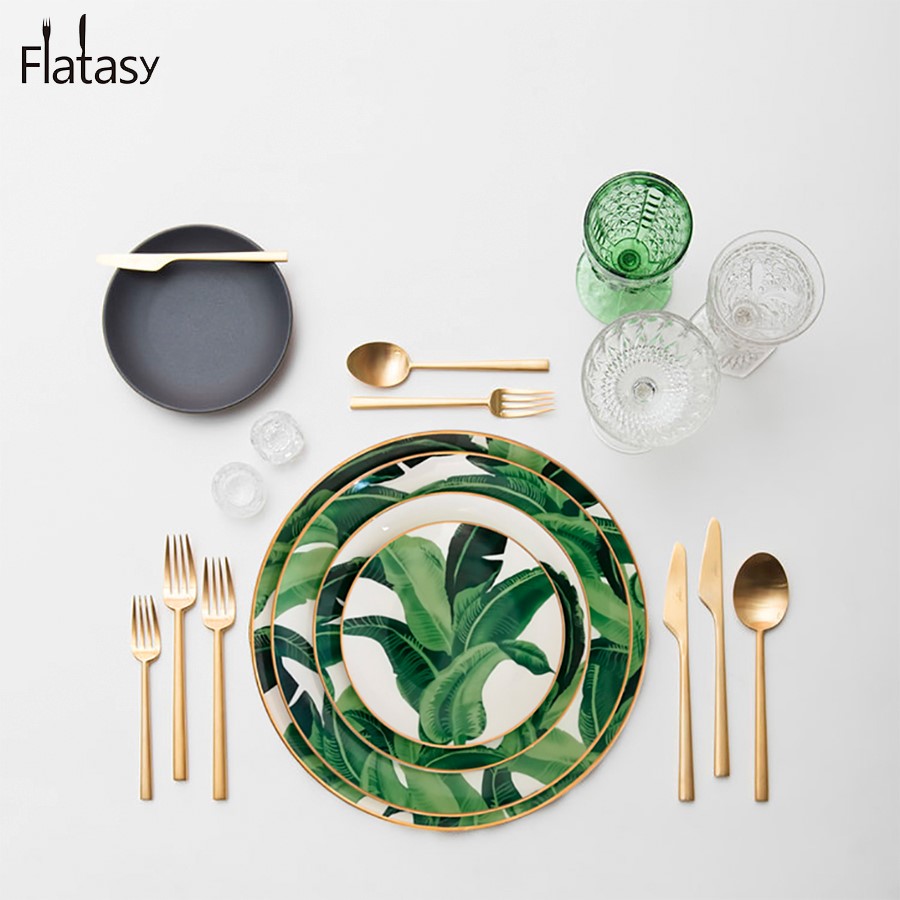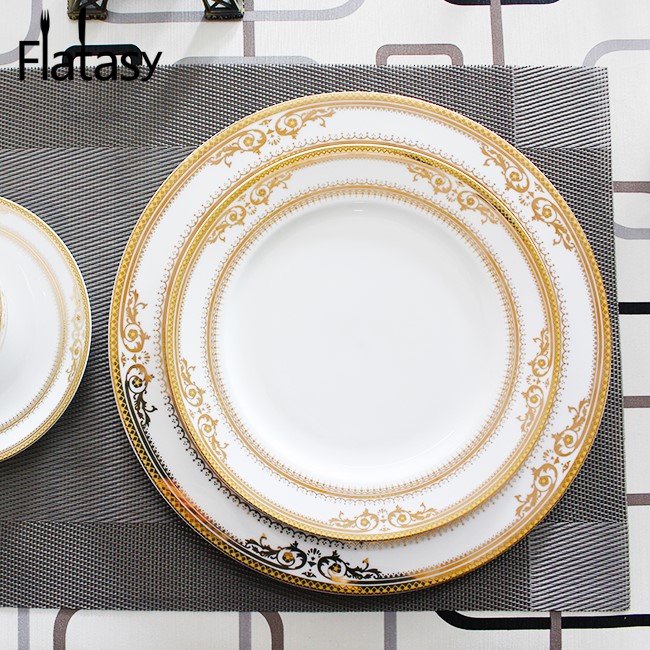When it comes to choosing the perfect dinnerware, understanding the differences between various materials is essential. Bone china and ceramic plates are two popular options, each with its unique qualities and characteristics. In this article, we will explore the dissimilarities between bone china and ceramic plates to help you make an informed decision for your tableware needs.

Composition:
Bone China Plates: Bone china is made from a blend of bone ash, kaolin clay, and feldspathic material. The inclusion of bone ash gives it a translucent quality and exceptional durability.
Ceramic Plates: Ceramic plates, on the other hand, are crafted from clay, water, and other natural materials. They are kiln-fired at lower temperatures compared to bone china.
Translucency:
Bone China Plates: Bone china is renowned for its delicate and translucent appearance. When held against light, bone china plates allow a soft, subtle glow to pass through, giving them an elegant and refined look.
Ceramic Plates: Ceramic plates are opaque and do not possess the translucent quality of bone china. They have a solid, sturdy appearance.
Durability:
Bone China Plates: Despite their delicate appearance, bone china plates are surprisingly durable. They are resistant to chipping and are less prone to cracks compared to ceramic plates.
Ceramic Plates: Ceramic plates, while sturdy, are more susceptible to chipping and cracking due to their composition and firing process. They are generally thicker and heavier than bone china plates.
Weight and Thickness:
Bone China Plates: Bone china is lightweight and thin, making it easy to handle and stack. The thinness of bone china adds to its elegance and sophistication.
Ceramic Plates: Ceramic plates are thicker and heavier than bone china plates, providing a more substantial feel. Some people prefer the heftiness of ceramic plates, especially for everyday use.

Heat Retention:
Bone China Plates: Bone china has excellent heat retention properties, allowing it to keep food warm for a longer time. This feature is especially appreciated during formal dinners.
Ceramic Plates: Ceramic plates have moderate heat retention capabilities. While they retain heat reasonably well, they might not keep food warm for as long as bone china.
Design and Decoration:
Bone China Plates: Bone china provides a smooth and ideal canvas for intricate designs and detailed patterns. Its fine texture allows for elaborate and exquisite decorations, often in the form of hand-painted motifs.
Ceramic Plates: Ceramic plates offer versatility in design. They can be found in a wide range of styles, from minimalist and contemporary designs to vibrant and artistic patterns.
In summary, the choice between bone china plates and ceramic plates ultimately depends on your preferences, lifestyle, and intended use. Bone china plates exude elegance with their translucent appearance and delicate design capabilities. They are ideal for formal occasions and special events. Ceramic plates, on the other hand, are practical, sturdy, and suitable for everyday use. Understanding the differences between these two materials will help you select the perfect dinnerware that aligns with your taste and dining needs.
Post time: Nov-06-2023




